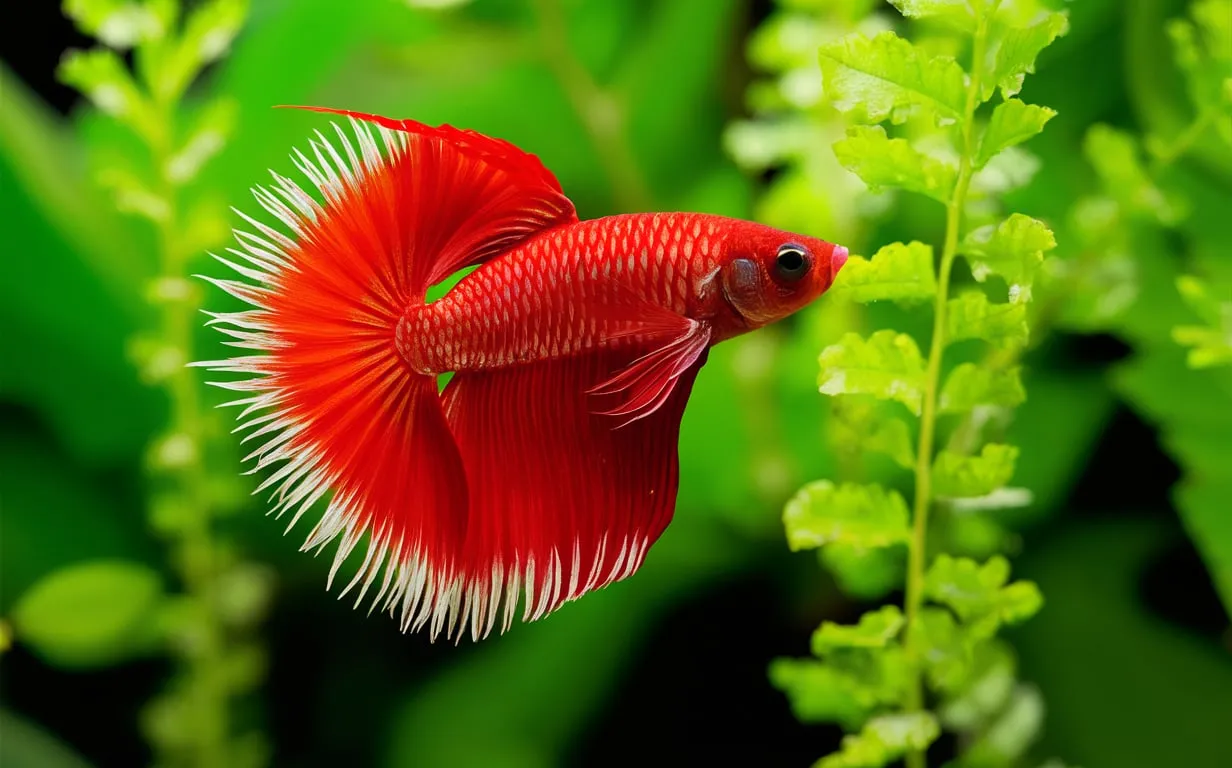Betta Fish, also known as Siamese fighting fish, are a popular choice among aquarium enthusiasts. These vibrant and captivating creatures require a well-designed habitat to thrive. One of the most versatile and beneficial plants for a betta fish tank is the java fern. In this comprehensive guide, we’ll explore the many advantages of incorporating java fern into your betta’s aquatic ecosystem.

What is Java Fern For Betta?
Java fern, scientifically known as Microsorum pteropus, is a hardy, low-maintenance aquatic plant that originates from Southeast Asia. It is a popular choice for aquariums due to its adaptability, ease of care, and ability to provide a range of benefits for the inhabitants of the tank.
Appearance and Growth Characteristics
Java fern is a rhizomatous plant, meaning it has a horizontal stem-like structure from which the leaves and roots emerge. The leaves are typically long, narrow, and slightly undulating, with a distinct midrib running through the center. The plant can grow to various sizes, ranging from small, compact forms to larger, lush varieties, depending on the specific cultivar and tank conditions.
Benefits Of Java Fern or Betta Fish
Incorporating java fern into a betta fish’s habitat can offer numerous advantages for the well-being and thriving of your aquatic companion.
Hiding Spots and Shelter
Betta fish, being territorial and sometimes aggressive, appreciate having plenty of hiding spots and areas to retreat to within their environment. Java fern’s intricate, bushy growth provides ample cover and shelter, allowing your betta to feel secure and protected.
Oxygenation and Waste Removal
As a photosynthetic plant, java fern releases oxygen into the water, which is essential for the respiratory needs of your betta. Additionally, the plant’s root system and leaves can help absorb and remove harmful nitrogenous waste, contributing to the overall water quality in the tank.
Stress Reduction
The presence of java fern in a betta fish’s tank can help reduce stress levels. Bettas are known to be sensitive to water conditions and environmental changes, and the natural, calming presence of the plant can have a soothing effect on your fish.
Decoration and Aesthetic Appeal
Java fern’s unique and visually appealing foliage can add a beautiful, natural element to your betta’s aquarium. The plant’s lush, green leaves and distinct growth patterns can enhance the overall aesthetic of the tank, creating a serene and inviting environment for both you and your betta to enjoy.
Caring For Java Fern In A Betta Tank
Maintaining java fern in a betta fish tank is relatively straightforward, as the plant is known for its hardy and adaptable nature.
Lighting Requirements
Java fern thrives in moderate to low lighting conditions, making it an excellent choice for betta tanks, which often have relatively low light levels. Avoid placing the plant in direct, intense sunlight, as this can lead to algae growth and potential issues.
Substrate and Attachment
Java fern is a unique plant in that it does not require soil or substrate to be planted. Instead, the rhizome can be attached to driftwood, rocks, or even the aquarium glass using fishing line or aquarium-safe glue. This allows for flexible placement and prevents the rhizome from being buried, which can lead to rot.
Water Parameters
Java fern is adaptable to a wide range of water parameters, making it a suitable choice for betta fish tanks. Maintain a pH between 6.0 and 7.5, with moderate water hardness and moderate to low water flow.
Feeding and Maintenance
Java fern is a low-maintenance plant that requires minimal feeding. Occasionally, you can supplement the plant’s growth with a small amount of liquid fertilizer or nutrient-rich substrate. Regularly trim any dead or damaged leaves to keep the plant healthy and visually appealing.
How Can I Prevent Algae Growth In My Betta Tank?
Here are some tips to help prevent algae growth in a betta fish tank:
- Maintain proper lighting – Provide the right amount of light for your tank. Too much light can promote algae growth. Use a timer to ensure the lighting is on for the appropriate duration each day.
- Perform regular water changes – Perform partial water changes of 25-50% weekly to remove waste buildup and excess nutrients that can feed algae.
- Use a good filter – A high-quality filter that provides adequate water circulation and mechanical, biological, and chemical filtration will help remove waste and prevent algae.
- Avoid overfeeding – Only feed your betta what it can consume in a couple minutes, 1-2 times per day. Excess uneaten food will contribute to nutrient buildup.
- Add live plants – Live aquarium plants will compete with algae for nutrients and provide natural filtration.
- Reduce nutrients – Avoid using fertilizers and limit fish waste by not overstocking. Excess nutrients like phosphates and nitrates feed algae.
- Use an algae scrubber or clean surfaces regularly – Manually remove algae growth from surfaces, decorations, and plants to prevent it from spreading.
Following these tips will help create a balanced tank environment that is less conducive to algae growth. Let me know if you have any other questions!
Conclution
By incorporating java fern into your betta fish’s aquarium, you can create a thriving, natural environment that caters to your pet’s needs while also enhancing the overall aesthetic of the tank. With its hardy nature and numerous benefits, java fern is a must-have for any betta enthusiast.

Related Posts
Female Betta Care: A Comprehensive Guide
Understanding Betta Fish Water
What Are Clamped Fins On Betta?